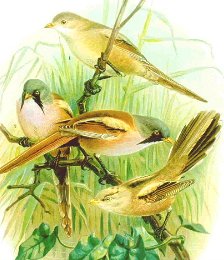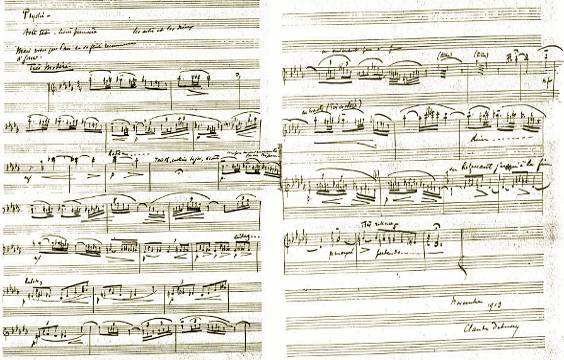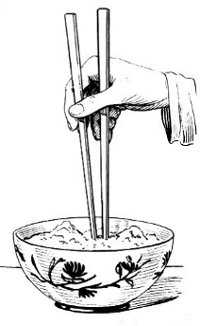Saturday 1 August 2009
National anthem of Germany, by Joseph Haydn

Das Deutschlandlied (“The Song of Germany“, also known as Das Lied der Deutschen, “The Song of the Germans”) has been used as the national anthem of Germany since 1922. The music was written by Joseph Haydn in 1797 as an anthem for the birthday of the Austrian Emperor Francis II of the Holy Roman Empire. Haydn also used the melody in the second movement the Kaiserquartett, a string quartet that is still widely performed today.
The tune is often used in the English-speaking world for the hymn “Glorious Things of Thee are Spoken” by John Newton. In this context, the tune is called “Austria”, “Austrian Hymn”, or “Emperor's Hymn”. The tune is also used for the hymn “Not Alone for Mighty Empire” by William P. Merrill.
Sunday 2 August 2009
Site update: Scales section updated
New scales and improved information now available
We've added four new scales: the basic chromatic scale, the major and minor pentatonic scales and the blues scale. As always, all the scales are available in the downloadable two-octave version, in PDF format.
Moreover, the major and minor scales now have an extensive introduction explaining all you need to know about them.
By the way, you may have noticed that we've also added a widget in the subtitles of all the posts about new sheet music that enables the playback of the MP3 tracks directly from the homepage. Do you find them useful? Let us know your opinion!
Sunday 2 August 2009
from J.S. Bach's Orchestral Suite No. 2 in B minor
In the 20th century this last movement from Orchestral Suite No. 2 has become one of the most famous show-pieces for solo flutists, due to its quick pace and difficulty.
It is also often heard as a mobile phone ringtone, since it became one of the favorite Bach ringtones on the first polyphonic models by Nokia.
The term “badinerie” (from the French badiner, ‛to jest’) arose during the 18th century, when this brief and lively dance was first included as a movement in the Baroque suite.
Monday 3 August 2009
Traditional Prussian March by Frederick the Great
Did you know that King Frederick II of Prussia was a gifted musician who played the transverse flute? He composed 100 sonatas for the flute as well as four symphonies. His court musicians included C.P.E. Bach, Johann Joachim Quantz, and Franz Benda. It was a meeting with Johann Sebastian Bach in 1747 in Potsdam that led to Bach writing The Musical Offering.
And it was the “Old Fritz”, as the king was nicknamed, who wrote the “Hohenfriedberger”, one of the best known German military marches. It is named for the victory of the Prussians over the allied Austrians and Saxons in 1745 during the Second Silesian War in the Battle of Hohenfriedberg, near Striegau.
You may remember this march being used at the beginning of the film Stalingrad, or in Stanley Kubrick's Barry Lyndon depicting the Prussian army during the Seven Years War.
Tuesday 4 August 2009
from “The Nutcracker Suite” by Pyotr Ilyich Tchaikovsky
The Nutcracker is a fairy tale-ballet in two acts, composed in 1891–92. In Western countries, it has become perhaps the most popular of all ballets, performed primarily around Christmas time.
The composer made a selection of eight of the numbers from the ballet, forming The Nutcracker Suite, Op. 71a, intended for concert performance. Among these numbers is the “Dance of the Sugar Plum Fairy” from Act II, which is particularly noted for its use of a celesta as a solo instrument.
Selections from the Nutcracker Suite were heard in the 1940 Disney animation film Fantasia. In this film, the music from The Nutcracker is accompanied by dancing fairies, mushrooms and fish (while the Nutcracker itself is nowhere in sight).
And of course the “Dance of the Sugar Plum Fairy” was featured in the 1990 Christmas film Home Alone with Macaulay Culkin.
Wednesday 5 August 2009
by Johann Sebastian Bach
The Inventions, also known as the Two-Part Inventions, are a collection of fifteen short keyboard compositions by Johann Sebastian Bach, who originally wrote them as exercises for the musical education of his students in the German city of Köthen.
Bach's Inventions were thus designed as teaching pieces rather than for performance. As stated on the title page of the work, the collection wants to be “A faithful Guide, whereby admirers of the harpsichord are shown a plain Method of learning not only to play cleanly in two Parts […] and at the same time not merely how to get good Inventions, but also how to develop the same well; but above all, to obtain a cantabile Style of playing, [i.e. a style which imitates the human voice] and together with this to get a strong Foretaste of Composition”.
Thursday 6 August 2009
Composed in 1939 by Alexander V. Alexandrov

This famous hymn was adopted in late 2000 by President Vladimir Putin and replaced “The Patriotic Song”, which had been the official anthem since 1990.
The music of the anthem had actually been used in several hymns and compositions before its use in the Russian anthem. The first time the music was used was in the Hymn of the Bolshevik Party, composed in 1939. When the Comintern was dissolved in 1943 it was felt that the “Internationale”, which was historically intimately associated with the Comintern, should be replaced as the National Anthem of the Soviet Union. Alexandrov's music was chosen for that purpose in 1944 by the Soviet leader Joseph Stalin.
You might remember this tune because of its appearance in the 1990 film The Hunt for Red October, in which it is proudly sung by Sean Connery's submarine crew.
Friday 7 August 2009
Theme from “Jupiter, the Bringer of Jollity” from Holst's “The Planets”

This British patriotic song was created in 1921 when Gustav Holst adapted the stately main theme of “Jupiter” from his orchestral suite The Planets to create a setting for a poem by Sir Cecil Spring-Rice. The music was extended slightly to fit the final two lines of the first verse; the resulting hymn tune is usually referred to as “Thaxted”, named after the village where Holst resided much of his life.
Diana, Princess of Wales, requested that this hymn be sung at her wedding in 1981, saying that it had “always been a favourite since schooldays”. It was also sung at her funeral in 1997 and at her ten-year memorial thanksgiving service in 2007.
Saturday 8 August 2009
by Charles Gounod

The television program Alfred Hitchcock Presents (and its sequel, The Alfred Hitchcock Hour) introduced viewers to Charles Gounod’s little “Funeral March for a Marionette”, although most were none the wiser that they were hearing honest-to-goodness classical music. Gounod composed it in 1872 for an unfinished Suite Burlesque, apparently with tongue in cheek: killed in a duel, a marionette is being taken to his final resting place, but members of the funeral procession apparently cannot resist stopping off at a nearby tavern to take the edge off their grief!
Sunday 9 August 2009
from Flute Concerto in G by Carl Stamitz
The delightful Flute Concerto in G, Op. 29, was composed by Czech-German composer Karl Philipp Stamitz, now better known as Carl. It is similar in style to other better-known works by Mozart or Haydn, but with some more unexpected turns of form.
This second movement, marked “Andante non troppo moderato”, features a beautiful singing melody in the flute, accompanied by beautifully light pizzicato figures from the orchestra.
Thanks to Micron for requesting this piece!
Monday 10 August 2009
“Trepak” from “The Nutcracker Suite” by Tchaikovsky
The “Trepak” is certainly one of the most distinguished and celebrated dances in Pyotr Ilyich Tchaikovsky's ballet The Nutcracker. One of several consecutive ethnic dances in the ballet, it is based on the traditional Ukrainian folk dance known in Ukrainian as the Tropak. This is a bravura dance in 2/4 time performed exclusively by men, featuring deep squats and split leaps.
The “Trepak”, which often also goes under the name “Russian Dance”, constitutes an excellent example of Tchaikovsky's work, flush with his common use of Russian and Ukrainian folk melodies.
The tune is used in the celebrated Disney film Fantasia, when flowers take the place of the Cossack dancers, thistles resembling men in fur hats and orchids as women with bonnets. Disney also used the tune in the Care Bears show.
Tuesday 11 August 2009
from J.S. Bach's Partita in A minor for solo flute
While Bach's other works for unaccompanied instruments — the Suites for solo cello and the Sonatas and Partitas for solo violin — were all informed to one degree or another by his own skill as a string instrument performer, with the flute Partita Bach was left almost entirely to his own ingenuity, as neither tradition nor personal familiarity could come into much play during the creation of such a work.
The Bourrée anglaise which closes the Partita is probably the most immediately arresting of the four movements. Judging from the many appearances of this particular subspecies of the bourrée that pop up in the music of Bach, Handel, and other composers of the time, this form was then well in vogue throughout Europe. It is built around a typical “backwards” short-short-long rhythm, set up in this case as the counterbalance for more florid running sixteenth note passages.
Wednesday 12 August 2009
Jazz standard from “The Wizard of Oz”

This classic melody, often referred to as “Somewhere Over the Rainbow”, was written by Harold Arlen for the movie The Wizard of Oz, in which it was sung by Judy Garland as Dorothy.
The song is number one of the “Songs of the Century” list compiled by the Recording Industry Association of America and the National Endowment for the Arts. It was even adopted (along with Irving Berlin's “White Christmas”) by American troops in Europe in World War II as a symbol of the United States.
Thursday 13 August 2009
from Edvard Grieg's “Peer Gynt Suite No. 1”

Next to “In the Hall of the Mountain King”, “Morning Mood” is one of Grieg's best known works.
This gorgeous composition, also known by its original Norwegian title Morgenstemning or by the German Morgenstimmung, belongs to Peer Gynt Suite No. 1, Op. 46. It is often heard in television commercials and motion pictures, perfectly depicting the rising of the sun. Contrary to popular belief, however, it is not meant to depict a sunrise over the Norwegian fjords: it was actually written to depict a sunrise over the Sahara Desert.
It was a favorite of cartoon music composer Carl Stalling, who often used it for morning establishing shots in the Looney Toons shorts produced by Warner Bros.
Friday 14 August 2009
Flute duet by Georg Philipp Telemann
Often described as the most prolific composer in history, Georg Philipp Telemann was a contemporary of J.S. Bach, Vivaldi and a lifelong friend of Handel. While in the present day Bach is generally thought of as the greater composer, Telemann was more widely renowned for his musical abilities during his lifetime.
In 1727, Telemann published his Sonates sans Basse à deux Flutes traverses, ou à deux Violons, ou à deux Flutes à bec, or “Sonatas without Bass for Two Transverse Flutes, or Two Violins, or Two Recorders”. These six sonatas for two melody instruments follow the common custom of leaving some latitude in the choice of instrument, providing the possibility of wider sales, particularly for the flourishing amateur market.
“Dolce” (Italian for ‛sweet’) is the first movement of what is usually called Sonata No. 2, although sometimes it is referred to as Sonata No. 1. It is also often found transposed to F major.
Saturday 15 August 2009
Early piano Ragtime by Scott Joplin
“Original Rags” was the first of Scott Joplin's rags to appear in print, in early 1899, preceding his “Maple Leaf Rag” by half a year.
The original cover page showed an old man picking up rags in front of a ramshackle cabin, and has been interpreted as a double pun, first on the activities of a rag (or junk) picker, and second on a slang term for ragtime, “picking the piano”. The piece was given the following credits:
“Picked By Scott Joplin, Arranged By Chas. N. Daniels”.
However, it is not known whether Charles N. Daniels actually arranged the piece, or merely transcribed it.
The rag is mostly in G major, except for the third section, which is in C major, and the fifth section (marked “Brilliant” in the sheet music), which is in D major.
Sunday 16 August 2009
American patriotic song, arranged for Flute and Guitar
“Home on the Range” is the official state song of Kansas since 1947, and is commonly regarded as the unofficial anthem of the American West.
Dr. Brewster M. Higley originally wrote the words in a poem called "My Western Home" in the early 1870s. The poem was first published under the title “Oh, Give Me a Home Where the Buffalo Roam”. The music was written by a friend of Higley's, musician and entertainer Daniel E. Kelley. The song was soon adopted by settlers and cowboys, and spread across the USA in various forms. During the early 20th century, it was arranged by Texas composer David Guion, who is sometimes erroneously credited as the composer.
"Home on the Range" is often performed in programs and concerts of American patriotic music, and is frequently used in plays and films. These include the 1948 film Mr. Blandings Builds His Dream House (sung by both Cary Grant and Myrna Loy), the 1967 musical You're a Good Man, Charlie Brown (sung by the cast as a glee club rehearsal number), the 1980 film Where the Buffalo Roam (sung by Neil Young over the opening credits), and the 1954 Looney Tunes cartoon short Claws for Alarm (sung by Porky Pig).
Monday 17 August 2009
Sinfonia to Cantata 156 by J.S. Bach
The term arioso, which in Italian literally means ‛airy’, designates a style of solo opera singing between recitative and aria. Arguably the famous arioso ever composed, today's piece serves as the opening sinfonia of cantata BWV 156 by Johann Sebastian Bach.
Bach composed this work at a time when family tragedies were prevalent in his life, and this is evident from the title of the text, which translates as “I stand with a foot in the grave“.
The opening sinfonia in F major, for oboe and strings, originated in a concerto movement, now lost, which Bach subsequently recast as the slow movement of his harpsichord concerto in F minor, BWV 1056. In transcriptions for flute it is often transposed to higher keys like G major or A major, but following our usual policy we preferred to leave it in its original key.
Tuesday 18 August 2009
or The Poor Little Country Maid. A folk song if ever there was one
Yes, you know this one. This is the song that cartoons on television inevitably play every time they feature either a belly dancer or a snake charmer.
The piece originally was purportedly written by Sol Bloom, a showman (and later, a U.S. Congressman) who was the entertainment director of the World's Columbian Exposition in 1893. It included an attraction called “A Street in Cairo” which featured snake charmers, camel rides and a belly dancer known as Little Egypt.
The first five notes of the song are similar to the beginning of a 1719 French song named “Colin prend sa hotte”, which in turn resembles note for note an Algerian or Arabic song titled “Kradoutja”. The piece was also used as a basis for several songs in the early 20th century: “Hoolah! Hoolah!”, “Dance of the Midway”, “Coochi-Coochi Polka”, “Danse Du Ventre”, “Kutchi Kutchi”. Even famous composer Irving Berlin reportedly used the popular melody in his song, “Harem Nights”.
Over the years, people have put a variety of their own comedic lyrics to this familiar song, like the famous “There's a place in France where the ladies wear no pants”. Some of these lyrics may have been inspired by the French music hall dancers of the time, who were known for the French Can-can.
It's also a nice tune to play on the piccolo.
Wednesday 19 August 2009
Traditional Irish/Scottish song
This Irish or Scottish traditional song is often sung at the end of a gathering of friends. It was allegedly the most popular song sung in both Scotland and Ireland before Robert Burns wrote “Auld Lang Syne”.
The song was printed as a broadside in the 1770s, and first appeared in book form in Scots Songs by Herd. An early version of the song is sometimes attributed to Sir Alex Boswell.
The song is doubtlessly older than its 1770 appearance in broadside, as it was recorded in the Skene Manuscript, a collection of Scottish airs written at various dates between 1615 and 1635. It was known at least as early as 1605, when a portion of the first stanza was written in a farewell letter, as a poem now known as “Armstrong's Goodnight”, by one of the raiders executed that year for the murder of the Warden of the Scottish West March.
The song is also known as “Goodnight and Joy Be With You All”.
Thursday 20 August 2009
Flute transcription of the Bagatelle in A minor by Ludwig van Beethoven
Among Beethoven's most popular compositions, the Bagatelle in A minor for solo piano, marked poco moto (“little motion”) was composed around 1810, when the composer was 40 years old and already firmly established as one of the greatest composers of all time. The piece is named “Für Elise” (which is German for “For Elise”) because a Beethoven researcher claimed to have seen this dedication on an old manuscript which has been missing since. The name “Elise” has been the cause of some speculation. It's a well known fact that Beethoven didn't have any luck when it came to marriage. At the time the piece was written he was in love with Therese Malfatti, who was one of several women to turn down his marriage proposal. Some scholars have speculated that the title was misread from “Therese” to “Elise” because of Beethoven's terrible handwriting, and that the piece was actually dedicated to Therese, who was studying under the maestro at the time. This is however quite a far stretch, and thus not a definitive answer to the riddle.
A few words about the transcription. While the beginning of the piece is easy to play, the middle section may actually prove very challenging, due to rapid interval jumps. Near the end the piece also features a gorgeous run of triplets that reaches the fourth octave of the flute. A wonderful exercise in flexibility.
Friday 21 August 2009
National March of the United States of America
This well known patriotic march is widely considered to be the magnum opus of composer John Philip Sousa. By act of Congress, it is the National March of the United States of America.
In his autobiography, Sousa writes that he composed the march on Christmas Day 1896. He had just learned of the recent death of his good friend David Blakely. Sousa was on a ferry in Europe at the time, and he composed the march in his head. He committed the notes to paper on arrival in America.
The Russian born pianist Vladimir Horowitz, who lived most his life in the United States, wrote a famous transcription of Stars and Stripes Forever for solo piano to celebrate becoming an American citizen. In an interview, Horowitz opined that the march, being a military march, is meant to be played at a walking tempo. He complained that many conductors played the piece too fast, resulting in music that is “hackneyed”.
In show business, particularly theater and the circus, this piece is called “the Disaster March”, as it is traditionally used to signal a life-threatening emergency. This helps theater personnel to handle events and organize the audience's exit without panic. Circus bands never play it under any other circumstances. One example of its use was at the Hartford Circus Fire in July 1944.
If you are looking for the famous piccolo solo, you can find it on top of page 2 of our transcription.
Saturday 22 August 2009
Traditional Scottish song
“Tha mi sgìth ‘s mi leam fhein” (Gaelic for “I am tired of being by myself every day in the blessed hills”), also known as “Buain na rainich” (“Cutting the bracken”), is an old Gaelic song, collected in the Hebrides.
There are many variations of the story relating to this song, but one version says that the song was originally sung by a fairy who caught sight of a beautiful girl when he was cutting bracken. They fell in love, but alas there was no fairytale ending. When her family learned of the love, they stopped the girl from seeing the fairy and they locked her away. His song mourns the situation.
The tune of this song is very old and it is often used as a lullaby. In Cape Breton though, they've sped it up, so it's almost a dance piece.
Sunday 23 August 2009
from Camille Saint-Saëns's “The Carnival of the Animals“

Carnival of the Animals is a set of orchestral character pieces, each of which is meant to describe a particular animal, usually by mimicking the sounds it makes or characterizing the way it moves or carries itself. The piece is scored for two solo pianos and a small orchestra of flute, piccolo, clarinet, xylophone, glass harmonica (usually replaced these days by celesta or glockenspiel in performance), and strings. This Carnival is a humorous, often parodistic work. Saint-Saëns only allowed the piece to be performed twice during his lifetime (once publicly by the Societe de la Trompette and once in a private performance requested by Franz Liszt, the famous piano virtuoso and composer who was a close friend of Saint-Saëns), likely because he feared the work would hurt his reputation as a serious composer. Only the movement “The Swan” was published before the composer's death.
The tenth movement, Volière (“Aviary”) depicts the fluttering calls of birds through a rapid flute solo that spans much of the range of the instrument. The similarity in sound to a flock of mixed birds is very noticeable. The movement ends very quietly after a long ascending flute scale.
Monday 24 August 2009
Fifth movement from J.S. Bach's Lute Suite No.1 in E minor

One of the most successful hits of flutist Ian Anderson, The 1969 Jethro Tull song “Bourée” from album Stand Up was inspired by this now popular Bach piece.
Nobody knows exactly what instrument J.S. Bach had in mind when composing his many pieces now considered to be for lute; indeed, some of these works are actually unplayable on any known variety of Baroque lute, and it may well be that in these cases he was writing for a peculiar device known as the Lautenwerk, a kind of harpsichord mechanism designed to approximate the timbre of the lute. A surviving manuscript of the Lute Suite in E minor, BWV 996, which is Bach's earliest work for lute, actually bears the inscription “Aufs Lautenwerk” (“From works for the Lute”), though the words appear to have been written by another hand.
Consider that the tempo of this piece should be fairly quick and smooth, since it was written to be a dance.
Tuesday 25 August 2009
Flute solo by Claude Debussy
This famous solo was written by Claude Debussy in 1913. It is commonly considered to be an indispensable part of any flutist''s repertoire. Many musical historians believe that “Syrinx”, which gives the performer generous room for interpretation and emotion, played a pivotal role in the development of solo flute music in the early twentieth century.
“Syrinx” was originally written as incidental music to the uncompleted play Psyché by Gabriel Mourey. It was intended to be performed offstage during the play, and was originally called “Flûte de Pan”. Since one of Debussy's Chansons de Bilitis had already been given that title, however, it was given its final name in reference to the myth of the amorous pursuit of the nymph Syrinx by the god Pan.
The god Pan was in love with the lovely maiden Syrinx. This love however, was not returned, and Syrinx evaded Pan by turning herself into a river reed and hiding in the reeds by the river. Pan was so upset that he cut down the reeds and made his Pan pipes from them. Of course this meant Syrinx had died and his love was lost forever.
There's a persistent belief that the piece was originally written by Debussy without barlines or breath marks, and flutist Marcel Moyse added these later. However, this might actually be an urban legend, since a copy of the now lost autograph seems to prove the contrary.

Update: György from South Africa points out that it is hotly debated whether the above manuscript is actually Debussy's handwriting and not that of the dedicatee Louis Fleury. Handwriting experts say Debussy's signature is different in all other correspondence he ever made and signed.
Tuesday 25 August 2009
Flute duet arrangement of “The Celebrated Chop Waltz”

This simple, extremely well-known waltz for piano was written in 1877 by Euphemia Allen, a 16-year-old British girl, who published the tune under the pseudonym of Arthur de Lulli. As far as we know, she never wrote anything else.
On page 3 of the original edition for piano duet were these instructions: “This part [primo part of the duet] must be played with both hands turned sideways, the little fingers lowest, so that the movements of the hands imitate the chopping from which this waltz gets its name.”
Some people think the name of the waltz comes from the Chinese eating utensil, because the piece is sometimes played with just the forefingers and this looks like someone spearing a morsel of food with chopsticks.
In the UK however, although this piece of music is well-known, it is not usually referred to as “Chopsticks”. The piece of music known as "Chopsticks" in the UK is actually a different piano piece, elsewhere known as “Der Flohwalzer”.
Wednesday 26 August 2009
from Gioachino Rossini's opera “William Tell”
The overture to the opera William Tell, especially its high-energy finale, is a very familiar piece. There has been repeated use (and sometimes parody) of this overture in the popular media, most notably in the US as the theme music for the Lone Ranger radio and television shows. It was also featured in Stanley Kubrick's A Clockwork Orange, recorded on a Moog synthesizer by Wendy Carlos.
The overture is actually written in four parts. The last part, the “Finale”, is arguably the most famous, consisting of an ultra-dynamic “cavalry charge” galop which, in the original score, is heralded by trumpets and played by full orchestra.
Thursday 27 August 2009
Traditional English song
The earliest printed copy of this traditional tune appeared in 1849. Originally from Cheshire, it was used in some areas as a two team singing game.
Will you accept of the key of my heart
To bind us together and to never never part?
Madam, will you walk?
Madam, will you talk with me?
No, I won't accept of the key of your heart
To bind us together and to never never part.
Neither will I walk,
Neither will I talk with you.
In many versions of the song, after many stanzas the lady's cupidity is at last excited by some especially magnificent offer, and, on her consenting, the man refuses to have anything to do with her.
This is very similar in subject to “The Keys of Canterbury”, but this tune has radically different characteristics, being in duple meter and in major mode.
Friday 28 August 2009
from Sonata VI in A major, transcribed for flute solo
Pietro Domenico Paradisi (also known as Pierre-Dominique Paradies) was one of the most successful harpsichord teachers of the mid-1700s. He was born in Naples in 1707 and was probably a pupil of Nicola Porpora, one of the teachers of Haydn.
Paradisi became famous for his twelve harpsichord sonatas, published in 1754. These pieces are graceful and of high quality. The well-known one is No. 6 in A major, the second movement of which has been reissued many times on its own as “Toccata in A”.
Saturday 29 August 2009
American patriotic song, aka “John Brown's Body”
This tune was originally written around 1855 by William Steffe as a campfire spiritual, “Oh brothers, will you meet us on Canaan's happy shore?”. The tune spread across the United States, taking on many sets of new lyrics, and eventually evolved into the well-known “John Brown's Body”.
In 1861 Julia Ward Howe heard the song during a public review of the troops in Washington, D.C.
She wrote a poem to the same tune for The Atlantic Monthly, and the magazine called it “Battle Hymn of the Republic”.
The hymn was sung at the funerals of British statesman Winston Churchill, American senator Robert Kennedy, and American presidents Ronald Reagan and Richard Nixon.
Sunday 30 August 2009
from “Five Pieces for Mechanical Clock or Flute”
This and four other pieces surfaced after Beethoven's death, bringing with them several very puzzling mysteries. Most challenging of them all was the instrument for which they were written. Piano, strings, harp and most other common instruments were instantly ruled out, building on the perplexing mystery and adding to the frustration. Eventually, Albert Kopfermann set forth a convincing argument that their strange scoring seemed a perfect fit for the Flötenuhr or Spielühr, a mechanical clock.
While the musical clock of the eighteenth century might seem like a toy to the twenty-first century ear and eye, its owners (usually members of the aristocracy) regarded it as a quite sophisticated device, not least because it was the only way to hear music away from the concert hall and parlors. Its chime-like tones may have limited its expressive range, but it seems that famous composers like Beethoven took compositions for the musical clock quite seriously.
Monday 31 August 2009
World-famous video game music by Koji Kondo

The Legend of Zelda series, like many Nintendo games, has been noted for its use of music. Kōji Kondō, who has been described as the “greatest legend in the video game audio industry” due to his work for Nintendo, is responsible for much of the music composed for the series.
Here's what the composer said about The Legend of Zelda: “When I think about Zelda, it's an adventure game that comes to my mind first and foremost. I have to think about the feeling, the kind of brave or courageous feeling in terms of making the musical notes. At the same time, the general setting sort of European, with historic European towns and cities and things like that, from a long time ago. Yet it's not so defined, after all; it's an unusual and unknown world for everybody. If you are going to make music appropriate to a totally unknown town and unknown cities, you've got to come up with totally unusual music as well. In that sense I've been given total freedom and autonomy when it comes to the types of music I can compose, so what I'm trying to do is let players have the opportunity to listen to a number of different types of music, by sometimes combining the different genres of music intentionally.”










